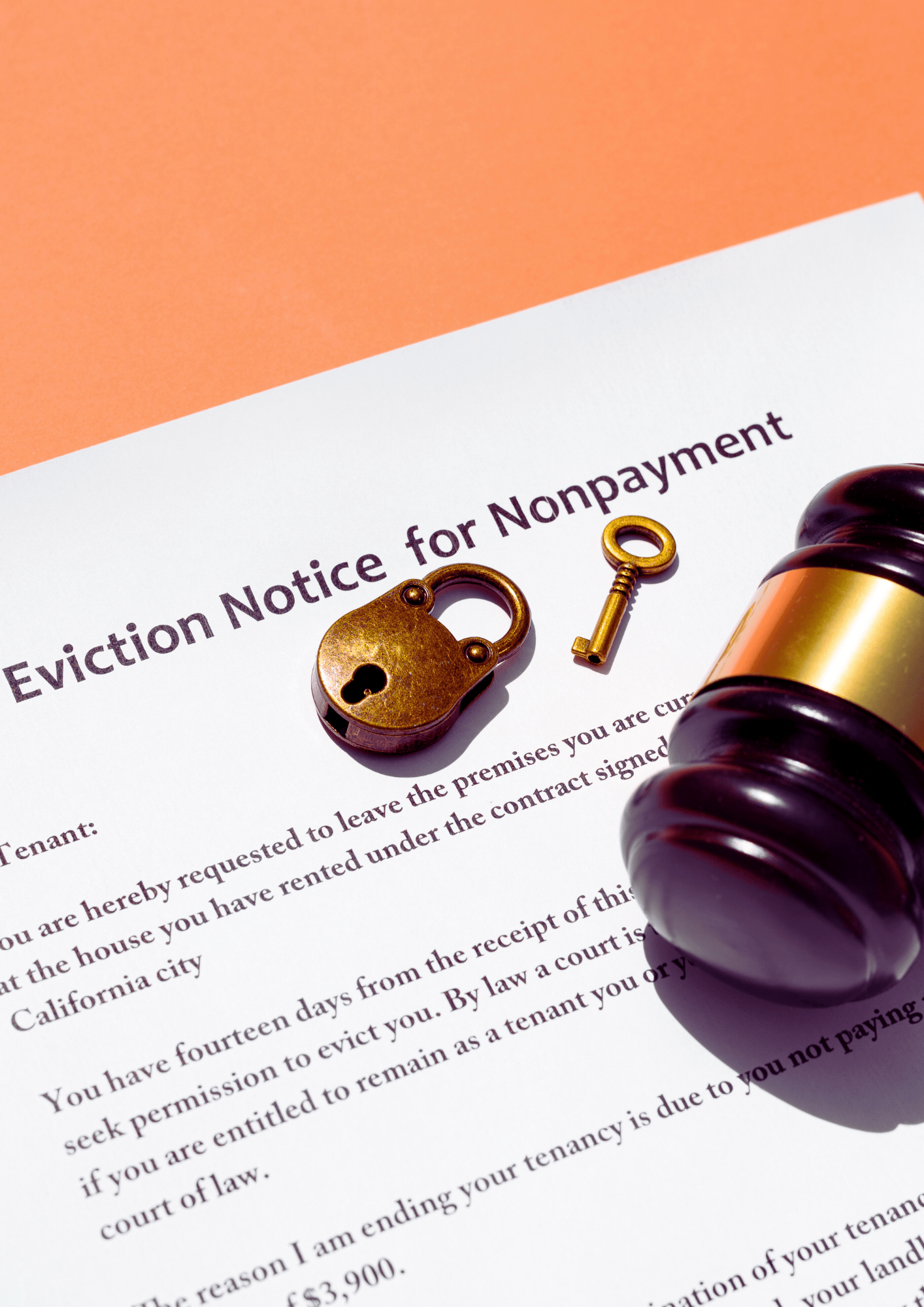Most real estate investors and even landlords renting out a single home will agree that California's rental landscape is one of the most complex in the nation. The rental markets here are shaped by a combination of statewide laws, local ordinances, and evolving tenant protections.
Anyone thinking about buying rental property here will want to stay informed about eviction moratoriums and tenant rights. This is crucial, especially now, when the laws continue to shift. Compliance is necessary, even when these regulations present challenges such as a lack of consistent rent.
Working with us at Bell Properties is a good way to reduce the risk of making a common legal mistake.
Let’s visit eviction moratoriums, which most of us thought ended when COVID protections began to abate. We’re also looking at tenant rights in California, and what all of this means for rental property owners.
Current Eviction Moratoriums in Place in California
We’re taking a look at the evolution of eviction moratoriums in a moment, but first, it’s important for Los Angeles rental property owners to understand that there’s actually a moratorium in place right now. The County of Los Angeles has implemented a countywide eviction moratorium until July 31, 2025, due to the wildfire that destroyed communities earlier in the year. This moratorium prohibits evictions for non-payment of rent for tenants who meet specific financial hardship criteria and provide timely notice. Additionally, a temporary ban on evictions for major renovations in Los Angeles is in effect until August 1, 2025.
What does this mean? Here are the details of the Los Angeles County Moratorium:
Duration. The eviction moratorium began on February 1, 2025, and it is in place until July 31, 2025.
Applicability. The moratorium applies to all renters in Los Angeles County, including incorporated cities.
Why? This moratorium is in response to the Palisades, Eaton, Hurst, and Kenneth wildfires.
Financial Hardship. Tenants must demonstrate financial hardship and provide timely notice to their landlord that they won’t be able to pay rent.
Repayment. Tenants are not excused from their rental obligations. They’ll have 12 months (until July 31, 2026) to repay any unpaid rent.
We also mentioned the Los Angeles City Ban on Evictions for Renovation. This ban is in place until August 1, 2025. Its purpose is to prevent landlords from evicting tenants for major renovations and then raising rents.
These are the existing eviction moratoriums. Investors who are unsure whether their properties are affected are invited to contact us at Bell Properties. We are monitoring the situation at the County and City level carefully and we can provide specifics around what these moratoriums and bans mean to owners who need to collect rent.
The Evolution of Eviction Moratoriums in California

Eviction moratoriums were not always common, even in California. But they arrived in earnest several years ago. Anyone who was renting out a home in 2020 will remember the pause on evictions. In response to the COVID-19 pandemic, California implemented several temporary measures to protect tenants from eviction due to nonpayment of rent. The COVID-19 Tenant Relief Act (CTRA) and the COVID-19 Rental Housing Recovery Act were written and passed to provide tenants with relief during the economic downturn caused by the pandemic. These laws prohibited landlords from evicting tenants for nonpayment of rent if the tenant had a pending application for rental assistance.
The state laws went further than the federal eviction moratorium laws. Tenants in California were protected for longer.
However, as of June 30, 2022, most aspects of these moratoriums had expired. Despite this, some local jurisdictions have enacted their own eviction protections to address ongoing housing instability. There are also increased programs available to tenants who need assistance staying in their homes.
Recent Legislative Changes Around Evictions
In April 2024, Senate Bill 567 (SB 567) introduced significant changes to California's eviction laws, particularly concerning "no-fault" evictions. Under the new provisions, rental property owners across the state must be aware of these updated requirements.
Substantial Remodels. Landlords must provide detailed information about the intended work and inform tenants of their right to reoccupy the property if the work doesn't commence or is not completed. Additionally, landlords must include copies of any required permits with the notice.
Owner Move-In Evictions. If a landlord or a landlord’s immediate family member intends to move into a unit, they must do so within 90 days of the tenant's departure and reside there for at least 12 months. Failure to comply can result in penalties.
These changes aim to close loopholes and ensure that eviction practices are transparent and justifiable. Landlords who are thinking about removing tenants in order to remodel their property or move into it themselves will not want to get started without talking to an expert. Reach out to us at Bell Properties. We can make sure everything is done in compliance with local and state laws.
Tenant Rights Under California Law

Understanding tenant rights is essential for investors to maintain lawful and ethical practices. Mistakes are easy to make, and they can be difficult to recover from. Key tenant protections that are always going to be front and center for rental property owners include:
1. Just Cause Eviction Protections
Under the California Tenant Protection Act of 2019 (AB 1482), landlords renting out most rental property types are prohibited from evicting tenants without "just cause." Just causes include:
Nonpayment of rent
Breach of lease terms
Nuisance or illegal activity
Owner move-in or substantial remodel (with specific requirements)
These protections apply to most residential multi-family rental properties that were built within the last 15 years, unless exempted.
2. Rent Control and Rent Increases
While California's statewide rent control law (AB 1482) limits annual rent increases to 5% of the current rent plus the local Consumer Price Index (CPI), or 10% of the current rent, whichever is lower, local jurisdictions may impose stricter rent control measures. Cities like Los Angeles and San Francisco have their own rent control ordinances that may offer greater protections against rent hikes.
It’s important to know whether a property is included or exempt, and if a property is exempt, the lease agreement must highlight that. Contact us at Bell Properties to ensure you’re in complete compliance.
3. Security Deposits
Lots of laws to understand around security deposits. The limit on what landlords can collect is now the equivalent of one month’s rent for most properties. Photos have to be taken and provided of the property condition before and after a tenant’s residency, especially if security deposit deductions will be taken. It’s also important to return the deposit and/or an itemized list of deductions within 21 days of a tenant moving out.
4. Protections for Domestic Violence Survivors
Senate Bill 1051 mandates that landlords change locks within 24 hours upon a tenant's request due to domestic violence concerns, provided the tenant presents appropriate documentation. The landlord is responsible for the cost of the lock change.
5. Prohibition of Discriminatory Evictions
Assembly Bill 1418 prohibits local governments from enforcing ordinances that require landlords to evict tenants based on criminal background checks or alleged nuisance behavior not defined under state law. This aims to prevent discriminatory eviction practices.
Local Ordinances and Their Impact
Beyond statewide laws, local ordinances play a significant role in tenant protections. Cities like Los Angeles, San Francisco, and Berkeley have their own rent control laws, eviction protections, and tenant rights regulations. These local laws can be more stringent than state laws and may include:
Stricter Just Cause Eviction Requirements. Some cities require additional documentation or procedures for evictions.
Higher Relocation Assistance. Local ordinances may mandate higher relocation payments for displaced tenants.
Additional Rent Control Measures. Some cities impose stricter rent control measures, limiting annual rent increases to below the state cap.
Investors must familiarize themselves with the specific laws in the jurisdictions where their properties are located to ensure compliance.
Implications for Real Estate Investors

For real estate investors, understanding and adhering to eviction moratoriums and tenant rights is crucial for several reasons:
Legal Compliance
Non-compliance with eviction laws can lead to costly legal battles, fines, and potential damage to an investor's reputation. Staying informed about both state and local regulations helps mitigate these risks.
Tenant Relations
Respecting tenant rights fosters positive landlord-tenant relationships, which can lead to longer tenancies and reduced turnover costs. Transparent communication about rights and responsibilities benefits both parties.
Financial Planning
Understanding rent control laws and eviction protections allows investors to accurately project rental income and plan for potential vacancies or rent adjustments.
Best Practices for Investors
 To navigate California's complex rental laws effectively, investors should consider working with our team at Bell Properties. We can make sure investors are informed. We can make sure lease agreements are clear and compliant. We can also bring in qualified attorneys and legal professionals when necessary if an eviction does become needed.
To navigate California's complex rental laws effectively, investors should consider working with our team at Bell Properties. We can make sure investors are informed. We can make sure lease agreements are clear and compliant. We can also bring in qualified attorneys and legal professionals when necessary if an eviction does become needed.
Understanding eviction moratoriums and tenant rights in California is essential for real estate investors to operate successfully and ethically. By staying informed about legislative changes, local ordinances, and best practices, investors can navigate the complexities of California's rental laws and build positive relationships with tenants. Compliance not only mitigates legal risks but also contributes to a fair and stable rental market for all parties involved.
Questions about the eviction moratoriums in California? We’re your best resource. Contact us at Bell Properties.


